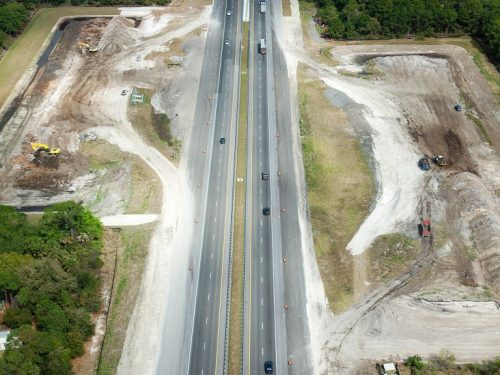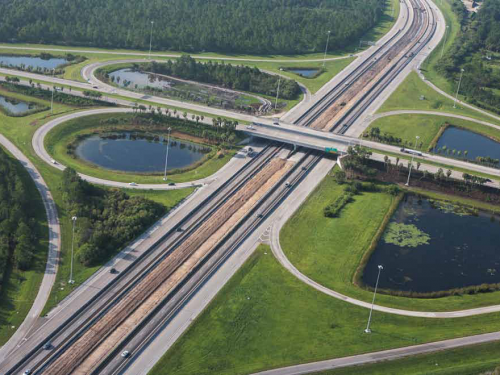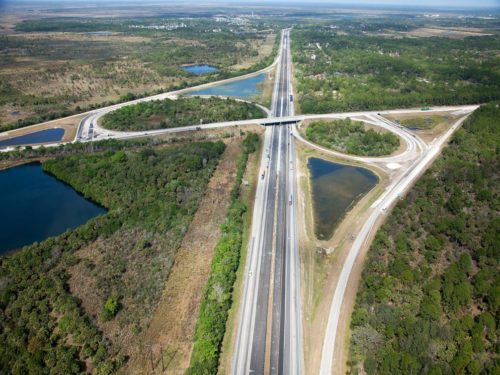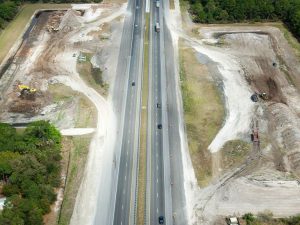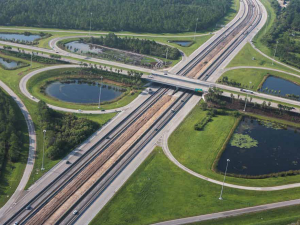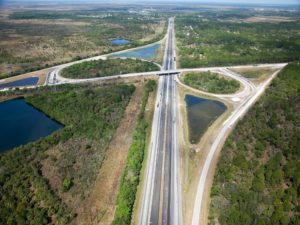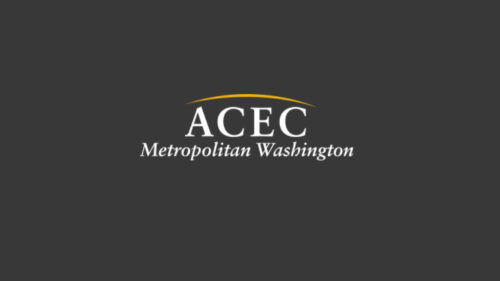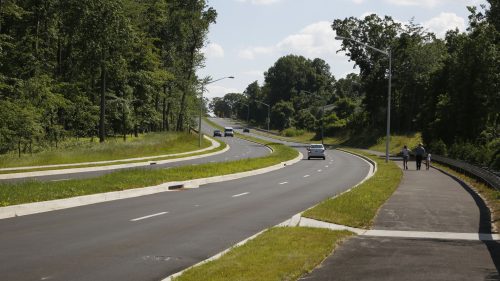I-95 Widening from SR 528 to SR 406
I-95 Widening from SR 528 to SR 406
The design-build team worked intensively to provide cost-effective design solutions that minimized potential environmental and utility impacts, and facilitated maintenance of traffic operations for this interstate project, which has an Average Annual Daily Traffic (AADT) in excess of 47,000.
Major components of this project included:
Highway – The project included the widening of approximately 15 miles of I-95 to include an additional lane in the northbound and southbound directions (4 to 6-laning) from SR 528 (Beachline Expressway) in Cocoa to SR 406 in Titusville. This segment of I-95 encompasses four interchanges and ends within the footprint of the SR 406 interchange. Ramp improvements were designed at both the St. Johns Parkway and SR 407 interchanges to improve traffic operations. Incorporation of safety upgrades throughout the project was a key aspect of JMT’s design, including length of guardrail and bridge pier protection at overpasses. JMT developed a cost-effective pavement design and worked closely with the contractor to develop a cross-slope correction design to meet current criteria that could be implemented with minimal impact to the traveling public.
Structures – JMT designed the bridge widening for the dual structures at the SR 50 (Cheney Highway) interchange, utilizing driven 18-inch steel pile foundations, Florida I-beams, and cast-in-place deck, parapets, and approach slabs. A new bridge structure was also included in the project design, as the existing three-span dual structures over the Addison Canal were demolished and replaced with an 88-foot-long, single-span structure. In addition, span and overhead cantilever sign structures were designed to accommodate the roadway widening.
Drainage Design & Environmental Permitting – This project included the complete reconstruction of the median drainage systems within the project limits, and the design or retrofit of 27 stormwater management facilities to provide the required water quality treatment and quantity control. A variety of stormwater management facility types were employed to meet the permit criteria, including dry retention, wet detention, and linear swales. A hydrologic and hydraulic analysis of the Addison Canal crossing at I-95 was completed as part of the development of a bridge hydraulic report for the proposed replacement bridge. JMT and the design-build team coordinated extensively with the regulatory agencies (including the St. Johns River Water Management District and the U.S. Army Corps of Engineers) to obtain permit modifications for the seven environmental permits associated with the project.
Additional services for the project included design survey, right-of-way mapping, design of 3000 linear feet of new sound walls, maintenance of traffic plans, storm water pollution prevention plans, erosion and sediment control plans, utility coordination, and development of ITS plans.
